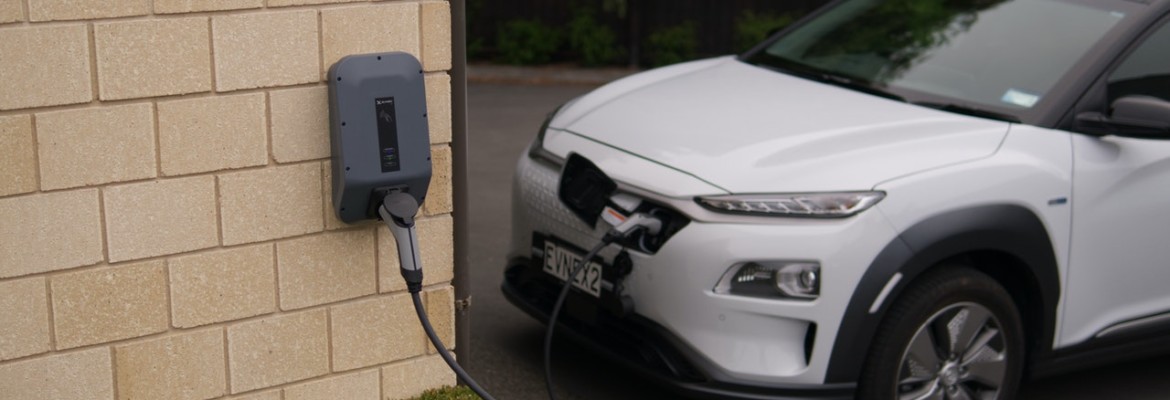Bidirectional charging: A first in Atlantic Canada
Electric vehicles are transforming the transportation industry. From automakers accelerating their electrification plans and shifting to all electric line-ups, to the Canadian Government spending more than $1 billion to support zero-emission vehicle adoption, the electric vehicle movement has picked up momentum, and shows no signs of slowing down.
By 2035, all new cars and light-duty trucks sold in Canada are planned to be zero-emission vehicles. And on a local level, our communities are committing to reduce emissions and prioritize sustainable transportation. Halifax Transit is adding 210 electric buses as part of their goal to electrify over half their fleet by 2028.
As more communities, businesses, and Nova Scotians choose to go electric, we’re planning for the future. This means understanding how additional charging will impact our electrical system and peak demand—the time of day Nova Scotians are using the most energy.
It’s why we’re exploring emerging technologies like bidirectional charging, as part of our Smart Grid Nova Scotia pilot. This new technology can help electric vehicle owners make an even bigger impact—for the environment, and for our electrical grid.
What is bidirectional charging and why do we need it?
Bidirectional charging allows electric vehicle drivers to not only charge their EV battery, but to also take the energy stored in their battery and push it back to a home, building or the power grid. It also enables smarter EV charging during off-peak hours, or when clean energy generation is high.
Vehicle batteries can be four to five times larger than current home batteries on the market. The bidirectional capability has the potential to support our plans for a greener and more efficient power grid.
How will this benefit Nova Scotians?
This technology has the potential to benefit more than just EV owners. The bidirectional charging capability can benefit the whole power system. It can even provide back-up power in the event of an outage.
And when it comes to clean energy, “renewable following”, allows us to control when to use energy from the grid to serve a building or charge a vehicle based on the amount of renewable energy in the system. This means that we can “follow” the greener generation by pulling from the grid when it’s abundant and shifting to the EV battery when there is less available.
As of right now, only a few EV manufacturers have bidirectional charging capabilities, but other manufacturers are exploring the technology. In the future, we hope to provide both residential and commercial customers the opportunity to realize energy cost savings and lower their household emissions by participating in a bidirectional charging program.
Working Together
As we work to integrate more clean energy technologies and build the grid of the future, collaboration is critical. We installed the first bidirectional charger at the NSCC campus in Middleton last March, as part of our continued and innovative partnership with the college. It’s the first in Atlantic Canada and one of the first in Canada.
The first vehicle-to-building charge as part of our Smart Grid Nova Scotia pilot program took place in June. The first bidirectional charger used was made by Coritech, which is primarily for commercial use – and we’re planning to collaborate with other vendors to test their bidirectional chargers. By doing so, we’ll be able to install up to 20 bidirectional chargers across the province in 2022, most of which will be for residential use.
NSCC Applied Energy Research Scientist, Dr. Wayne Groszko, is excited to be helping test this technology. “When we first could see that the vehicle was providing power to the building, that was a great moment, and hopefully the start of something much bigger,” said Dr. Groszko. “There will be a lot of electric vehicles operating in Canada, and bidirectional charging gives us more options for how to use them.”
NSCC students will also benefit from this collaboration at the three campuses where the chargers are being installed. The Energy Sustainability Engineering Technology (ESET) program is based at the Middleton campus, where the students can see and learn about this technology firsthand. Some will also participate in analysis of the test data for their senior projects or by completing an internship on the Applied Energy Research team. “Hands-on experience in the growing field of smart electric vehicle charging will help prepare students for the future,” said Dr. Groszko.
In addition to bidirectional charging, we’re also testing solar, batteries and electric vehicle smart charging to better understand their benefits to customers and the grid. To learn more about how we’re testing smart grid technology as part of our clean energy transition, visit nspower.ca/smartgridns.
Source: Bidirectional charging: A first in Atlantic Canada | Nova Scotia Power (nspower.ca)


